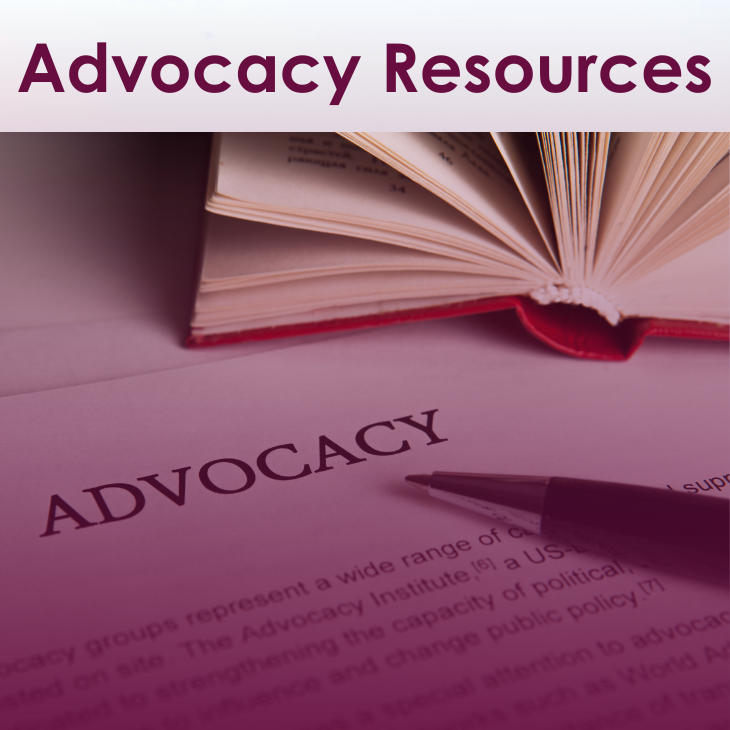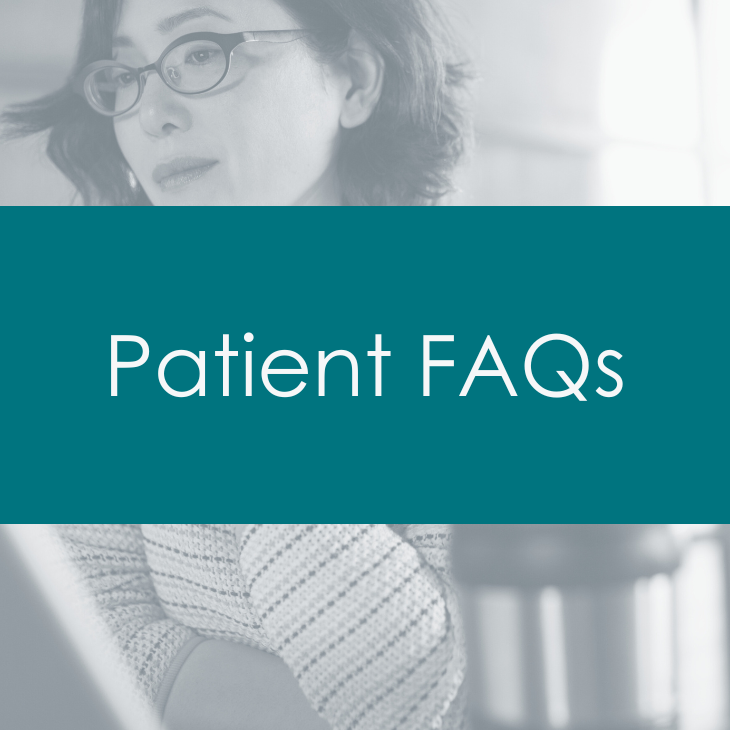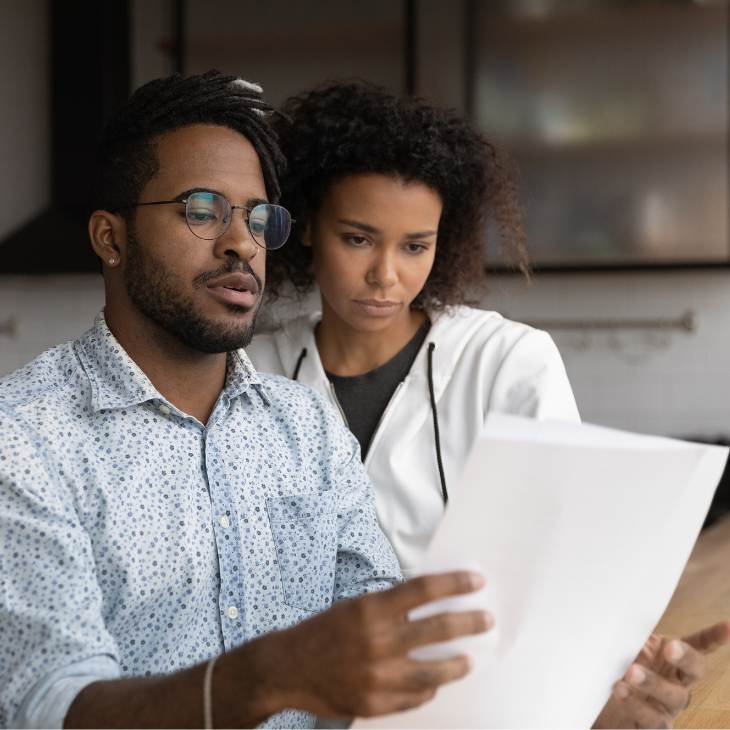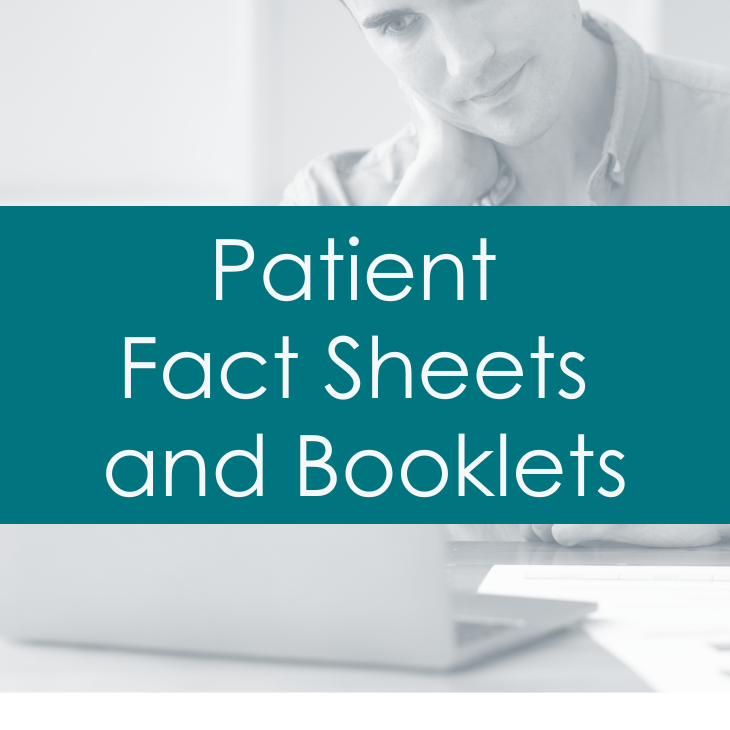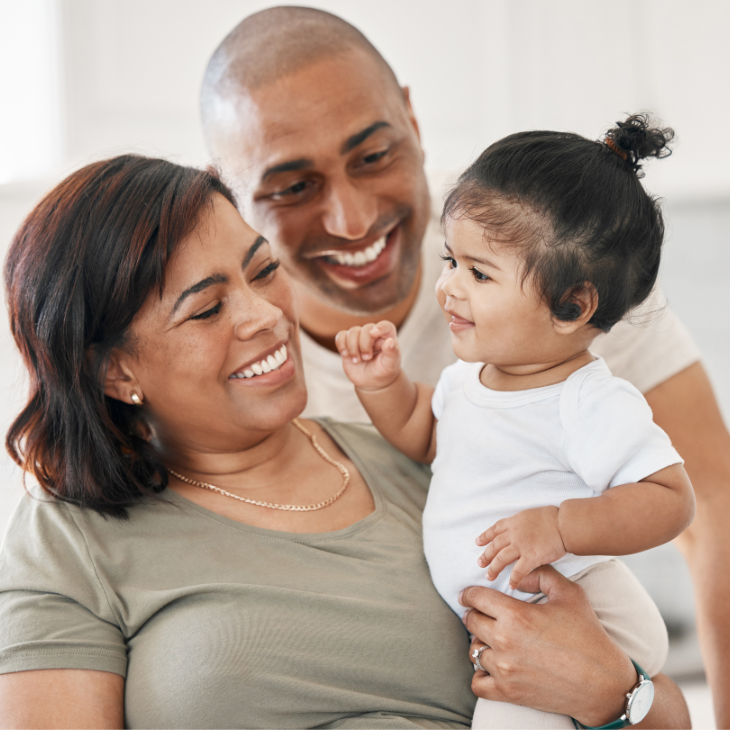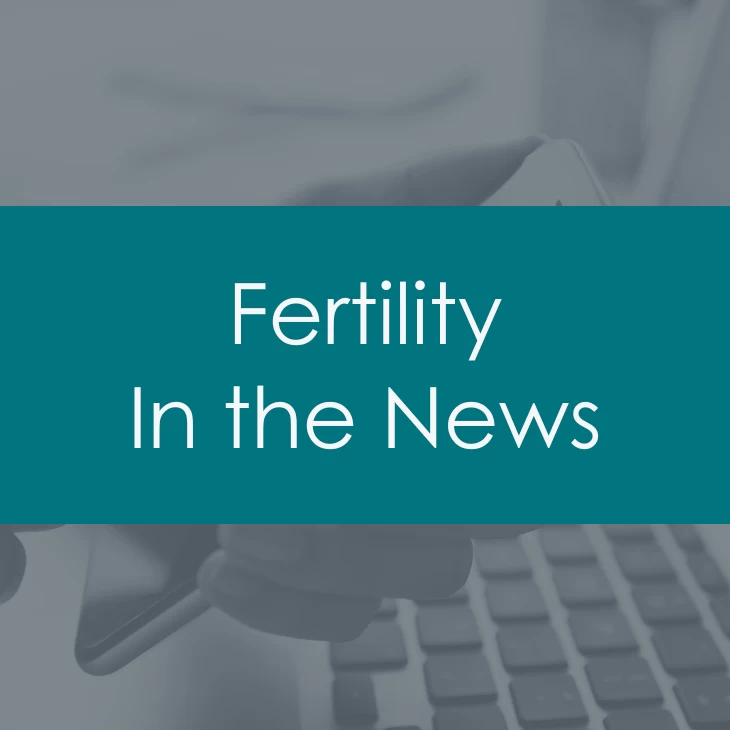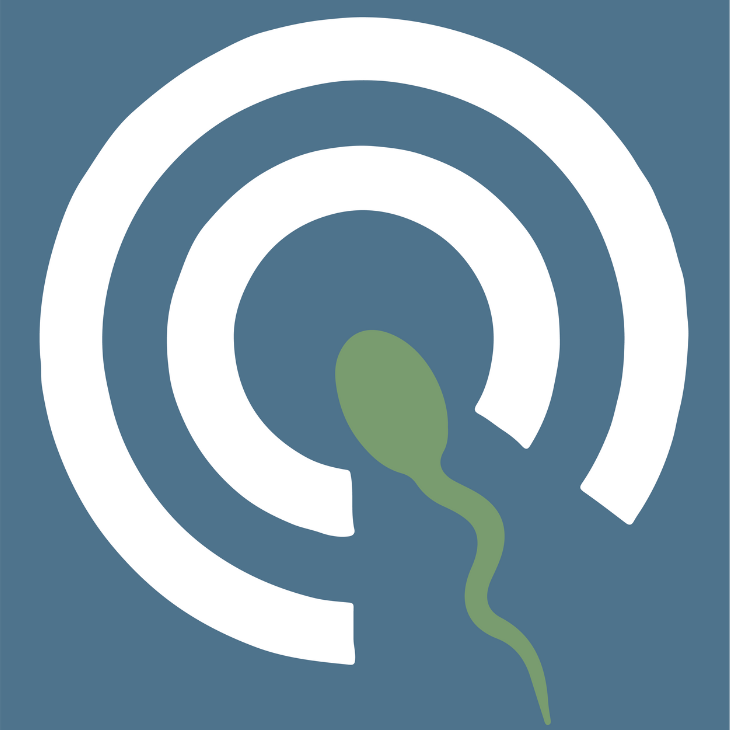
Transcript
Discover the benefits, process, and myths of embryo donation, including matching, costs, success rates, and interaction options for donors and recipients.
Welcome to the SART Fertility Podcast. Today's episode features embryo donation with frozen embryo transfer. We're lucky to have Deb Roberts with us today.
She's an expert in embryo donation. She is involved with embryo donation both professionally and personally. She had her undergraduate degree at University of Pennsylvania in Wharton School of Business.
She did her master's at Northwestern University. She is the founder and president of a concierge service called Embryo Connections. This is to help those with remaining embryos from IVF donate to intended parents struggling to have the children on their own.
She has presented national research on embryo donation motivations, barriers, and interests for donors and intended parents at the American Society for Reproductive Medicine. We're lucky to have her today. She's an overflowing single mom by choice of two fantastic children through embryo donation.
Thank you for being here, Deb. Thank you, Cristin. So nice to be here.
So we'll start from the basics. What is embryo donation? Great question. Embryo donation is when families go through IVF, when they use IVF to build their families, they often create as many embryos as they can to be sure that they can complete their family.
And it often leaves them with surplus embryos when their family is complete. Embryo donation is taking those embryos, allowing those families to donate to another family who is struggling to conceive. So it allows them to have viable embryos to start or complete their family.
Great. And how has the landscape changed in the last one, two, five years? Sure. Our most recent data is from 2023 when CDC and SART collect the data.
There were about 3,300 donated embryo transfers during that year. We're seeing about 8% growth over the last few years on that. But really what's important is that it's been skyrocketing for the last 15 years.
About 15 years ago, it really wasn't known at all as an option. People were storing their embryos and didn't really have a solution for them. And since then, it has really grown as a viable option for those who have completed their family and those who are looking to have children.
I'm so excited about this. I agree. 15, 20 years ago, it wasn't a discussion.
And now we have patients asking about this option and they're excited about it. And it's something that I do bring up as options for couples coming and single parents coming to the clinic. So I it's an exciting time.
Who are good candidates to receive donated embryos? Another great question. Really, anybody who is struggling to conceive is a great candidate. There are a couple of real criteria that are important.
One is that they've either been evaluated by a reproductive endocrinologist that they're able to carry a pregnancy. So of course, that's important because we have embryos that need to have a carrier. Or the second is that they have evaluated the option of using a gestational carrier and they've really considered that.
So in both cases, the idea is that there is a carrier for those embryos that is viable. Yes. What do you find recipients are typically looking for in their embryo donation? I know a information is shared about the embryos or the egg in the sperm that the embryos originated from.
Yeah, that's a great question. And I think it might help if I go back a little bit to talk about who the typical recipients are. Our typical recipients are either, they could be couples who are struggling to conceive as a couple.
And so maybe one of them is having fertility issues. And so one of the partners might say, if it's not going to be your gametes, it won't be my gametes either. So let's neutralize the parenting field so that we are raising a child together without an imbalance.
It could be a single parent by choice who says, I can't use a partner's gametes and maybe their own gametes are not acceptable. So they're going to need to use a double donor situation. This is a really great option for them because it can be cost prohibitive often to use double donor.
And they're also usually comfortable at that point with not using their own gametes and they can not create additional embryos in the world. So that's another reason for it. It is also a cost effective solution.
So for those who maybe don't have fertility insurance, which most of us do not have, this is a really great option because it's a lot less expensive. So when you're thinking about raising a child, it can be very expensive. So the ability to save some of that money up front and use it on the back end for raising a child can be helpful.
So when we look at that, and a lot of these families are okay with not using their own genetics. That's a really important component of this, that it's not their own genetics. So if they're comfortable with the idea of exploring traditional adoption, this is a really great option for them because it gives them the ability to have a child and maybe saves them from some of the concerns that come with traditional adoption.
So the wait time or fear that they might not be able to keep the child after the child is born, that kind of thing. It's also quite expensive to use traditional adoption. So now when we think about who those people are, what are they looking for? They're typically looking for some components that make them feel like that child is going to be part of their family.
So for a recipient, it could be physical characteristics or it could be attitudes or maybe skills or characteristics that are important to them. So for some people, it could be that they want somebody who is academically similar to them. Like we might hear, I want somebody who's interested in the arts or maybe more STEM focused.
So they're going to be looking for that because they want to have that connection with their child. And we do believe that genetics are an important component because there's the nature and nurture aspects of things, but people certainly are their genetics to some degree. And so we find that they might be looking for, I want somebody with a certain hair color or skin color so that they can blend in with their family so that they don't get those questions from the outside so that they can feel more natural for their own relationship with their child.
And some of it is just that connection. Like I like to do puzzles. I want my child to also feel good about doing puzzles.
So they're typically looking for those kinds of things. Maybe it's athletics. I'm a very outdoorsy athletic family.
And so I want to make sure that my child is also going to be interested in that. Right. And so on the typical profile, it'll have the medical family history.
We'll have photos and personal traits. Will they answer essay questions? Do you really get a sense of the background? Yes, absolutely. So the first thing is going to be the embryos themselves.
Right. So we're going to we're going to get what the embryo quality is, because, of course, I was talking about characteristics, but their number one requirement is good quality embryos. Right.
They want to make sure that they're going to be successful and have a live birth. That's the most important. And so the first thing that they're going to be looking at is what are the quality of those embryos? What was the success rate for that family? And so that's really the first page of any embryo donation profile, or at least it should be.
Right. Like what is the likelihood that I'm going to have a live birth? Then the rest of the profile, a donor completes a profile that's very comprehensive. It's like they're becoming an egg or a sperm donor.
So it'll have their physical characteristics or education, hobbies, interests, what makes them tick politically and socially, at least in our own program. It almost always has pictures and an open letter so that they can learn about who those donors are. And when we're doing our matching, we're also matching an interaction preference because that's really important to align those intended parents with their own expectations and comfort level for interaction.
So interaction really covers the spectrum from high engagement open where the kids grew up like cousins to generative disclosure at 18, where the children don't have the ability to interact. And so we really want to make sure that those parents are aligned from the very beginning on their interaction preferences. So that's going to be part of their profile as well.
Right. That completely makes sense. And I think when they find the profile that they're excited about, they know that.
And you're talking about the typical recipients. I do have patients that will say, you know, this is a big risk and, you know, maybe I don't have a good egg reserve and they're liking to have less risk. They're thinking about adoption.
But the nice thing about embryo donation is you can, you know, you can get these embryos and you're taking one risk factor out of the equation with the whole fertility process. Some people are nervous. Are we even, you know, am I going to get to have one or two high quality embryos? So it's kind of nice that you can can take that risk out of it.
Right. I mean, that that is really when you think about embryo donation, the value that it brings for a family is a 50 percent live birth rate, at least with embryo connections. We're vetting the embryos before they get to the donation pool to assure that 50 percent live birth rate.
And if you think about a traditional cycle, we're starting that funnel at I'm creating eggs, then they have to be mature, fertilize and turn into five day blasts and hopefully be chromosomally normal and then stick and make it past that first trimester and then ultimately make it to a live birth. Right. So that the percentages get smaller and smaller as you go through that process.
So depending on the age of an egg contributor or other factors, we're looking at if somebody is over 40 years old, the statistics are pretty low for that egg contributor to make it to a live birth. It's in the less than 10 percent category. Right.
Like we're talking about maybe eight percent to get to a live birth. And so being able to start at a full blast, a day five or day six full blast where, you know, the quality of the embryos, you can feel confident that you're going to have a 50 percent live birth rate. It does not mean that every embryo is going to stick and every embryo is going to result in a live birth.
But the odds are so much higher when you already have a full blast. Right. You know, in some situations, too, if you have a high quality PGT proven embryo, you're going to be, you know, 60 to 70 percent take home baby per transfer of one.
So I think, you know, 50 to 70 would be a very fair expectation. Nice that you get to control the prenatal environment as well. Yes, absolutely.
And so it's interesting that we're talking about this when we think about traditional adoption versus embryo donation. Part of that is controlling the in utero environment. Right.
You are there's a component of epigenetics which says you're going to turn on or turn off various genes that might affect lifelong health. But also that child is eating what you eat and sleeping. Not when you sleep, unfortunately, but there you're controlling what the what environment that child has during during their gestation, which is super important for the health of the child.
Right. That brings us to our next question. Who are the typical embryo donors and what are they looking for? Also, great question.
The embryo donors are people who have completed their families. They are so grateful to have been able to have children through assisted reproduction, just like the intended parents. They were struggling to conceive themselves.
And so they really want to pay the gift forward there. They really feel like they're they were fortunate. They feel very lucky that they were able to have children and they understand how painful it is to not feel like you might be able to have children.
And so they want to help somebody else. They often also feel very connected or responsible, rather is a better word for it. They feel responsible for the embryos because they created them.
They know that they are full genetic siblings of their children. And it was just a coincidence that they got the children that they got and they know how wonderful those children are. And so for them, there's this concept of while they know that they are potential children, they see the potential children in their own children.
And therefore, it's hard for them to just destroy the embryos. This isn't a faith based question. It's really about knowing that some of those embryos resulted in their children and they want to give those other embryos a chance.
So they tend to often be people who also used gametes, donated gametes. So if they use an egg donor, for example, or a sperm donor, they're grateful for that gift and they want to pay that gift forward. Sometimes they had tubal factors or maybe they had PCOS.
So there was a struggle with getting the eggs, but the eggs are actually really great quality and also means that they probably created a lot. So who these donors are, they tend to be people who had their children early in their IVF process or at least early in that cycle, say they used an egg donor. And so they have good quality remaining embryos and that's what brings them to us is the good quality remaining embryos and what should they do with them.
Right. And they know that the potential offspring will be going to very loving families where their parent or parents will really cherish them. Right.
I mean, that's one of the beauties about embryogenation is that they know that whoever they're giving it to is somebody who really wants to be a parent. And so for them, they also, they feel responsible that they put those embryos into a family that they feel comfortable with and that they can feel like they've done the right thing for the embryos. And then they take a step back.
And I think that's a really important piece for intended parents to understand is that these donors don't intend to co-parent. They're not looking at intended parents as gestational carriers or foster parents, for example. They really feel that they want those people to be parents and they're just grateful to have somebody to give those embryos to.
Yeah. And what myths or surprising truths about embryogenation are worth sharing? I know you've been doing this quite a long time and so you probably can speak of this. Right.
Yeah. I think the first one is that it doesn't matter the genetics or blood type or anything about the donated embryos for carrying. Right.
That's that's a really interesting question. Right. Right.
It doesn't matter. It doesn't matter. The human body is amazing.
And and the the uterus or, you know, that that cavity is carrying the pregnancy. But the genetics are already created. Right.
It's already an egg and a sperm. They're put together. The embryo is already a full blast and the body can carry it.
Right. So that's that's really amazing. I think as part of that, you know, some of the questions I had, especially as a somebody of small stature, could I carry embryos from somebody who will be very tall or very large? Yes.
So there really isn't any incompatibility when it comes to the traits and blood types and things like this. Yes. Yes.
Which is really amazing. I mean, as it as it happens, my children are going to be quite tall and I'm quite short and they grew after they were born. So when they were inside me, they stayed small and then they skyrocketed once they were born.
So another another myth is really about interaction and what donors are seeking. So that's that's a pretty important one. Right.
Donors want to have interaction generally because they are not all donors want interaction. But those who do want interaction want it because they know that those children are going to be full genetic siblings of their own children. They know that they're going to be pretty fabulous kids.
Right. Who might be curious about where they come from. And it's very helpful to have that information as a foundation for development, for psychological development.
So they want those children to be able to have access to where they come from, to be able to answer the questions. Maybe it's even just health updates or health questions, but also to say to be able to know their siblings. And they would love for their children to be able to know their full genetic siblings as well.
So when a donor comes in seeking open interaction, it's typically for that. Yes, donors are curious. They love to see pictures or get updates about how those children are doing.
And, you know, some of that is just to quell curiosity. Right. They're very curious and happy to learn about those things.
But they see themselves more as, I guess, outside observers or. You can kind of think of it like an aunt or uncle, right, like it's fun to learn about, but you're not imposing any parental mandates or expectations. So I think that's a lot of times our intended parents' biggest fear is that that parental expectation.
And that's not where the donors generally are generally sitting. They really want it for the sake of the donated offspring to know where they come from and for all the siblings to be able to know one another. Right.
And just to have that good feeling to know that something good has come out of this and that the families are doing well. Yeah. So when you donate, sorry, I was going to just think about this.
When you donate, you can donate in a known situation or, you know, anonymous or de-identified. So it can be either or some combination in between. Like you were saying, you can just say, you know, I'm donating, don't want a lot of identifiers, but please keep me updated.
Certainly there are. It's really a spectrum of interaction. So when we think about it, there's the one kind that you just mentioned, the pre-matched or known donations.
Right. These are people who come to us, maybe they're using their family or their friends' surplus embryos. So they've known each other from the very beginning from before embryo donation.
So that's a specific case where those families are going to have more conversation about what it means to interact. Right. Because now there's going to be a component of how do we talk about each other and how do we intend to interact long-term because they're already interacting.
And so there's going to be a change and you have to have some conversations about expectations about that interaction, which are going to be really important. And so what, you know, we'll definitely support them in having counseling sessions. And these are psychoeducational sessions that intended parents and donors will have to align on some of those things.
And so a joint session is really valuable for that. Then we also have high engagement open. This is where the families come together for the sake of embryo donation, but they really want those children to know one each other from a very young age.
So I think of it as akin to cousins, right? You have genetic relations in another family and children don't have a choice to know those families, right? They know their cousins from a young age and the parents don't ask them if they want to know their cousins, they just do. And that could be long distance, right? It could be not that much interaction, but the expectation is that those children from the very beginning are not only aware of one another, but have connected in some meaningful way. Low engagement open would suggest that the families, those intended parent, the recipients and the donors are talking to one another.
Maybe they have email addresses shared or phone numbers. They're sharing updates simply to share with the children. So then it becomes child led where the children decide when they want to know one another and the adults facilitate that interaction after the children have said that mutually, that they want to know one another.
And so it's, you know, we consider that low engagement open and it's child led, but the parents have been interacting from the beginning to share updates to benefit their own children. Semi-open is communication through a portal. Tends to be less interaction, right? These are people who maybe want more insular families, but they also want to have that line of communication so that they can share updates.
Maybe it's just medical updates, but they're allowing for that connection. And there is an option down the road to say, hey, let's open this up. Let's allow for open interaction.
We'll share each other's phone numbers or email addresses so the children can know one another directly. And that's always an option, but that you start with a little bit more of a wall. Donor ID disclosure at 18 allows for the offspring to get the donor's contact information at 18 so that they can interact either with their donors or with their full genetic siblings when they're adults.
We don't do anonymous or de-identified because it's not really an option today. It's not really logistically possible, right? It's not practically possible to stay de-identified for a lifetime. And because the donor conceived community has been very clear about how important it is to be able to access one's roots either for medical information or just to really understand who they are as people.
And so leaving that line of communication open, at least for adults, is very important. And so we don't even offer that as an option. And there's one more scenario, which I haven't mentioned, that kind of falls across that spectrum is pre-matched for the embryogenesis.
These are people who maybe met in a Facebook group or a different kind of setting. Maybe they met in an infertility support group. And so they're matching for the sake of embryogenesis and they might be anywhere on that range of interaction type that they'll define for each other, but they met outside of an agency or a clinic, for example.
Yeah, it's great to hear that there's so many options. So all parties feel comfortable and you can do a mutually arranged arrangement and it makes everyone feel more comfortable, whether they're donating or receiving and what boundaries they want to have. That's great.
Yeah. And even as we think about what those myths are, like where do people sit? I think there's maybe a concern that donors want to be a little bit more involved. And that's actually, I would say that donors cross the spectrum, just like intended parents do.
Some want more interaction and some want less. None of them hope to be intrusive, right? Their goal is not to intrude, but to engage at the level that the other party wants. And so I think that doing that counseling early and getting comfortable with what level of engagement is important to you is really important for matching to get aligned from the beginning with a donor or intended parent.
Right. So that makes sense. If you're ready to donate, then you can decide, you know, what comfort level you have with your alignment and then fill out a profile.
And what is it like for someone on the receiving embryos when they're getting ready to receive the embryos and do an embryo transfer? We've already talked about the typical success rates. We could talk about maybe logistics of receiving, or, you know, I can talk about the embryo transfer and then also the typical cost. I know there's going to be a wide range.
Yes, absolutely. So with Embryo Connections, we're going to start with a 30-minute consult with a client services manager. The purpose of that conversation is really to get a lot of questions answered, learn what those intended parents are looking for, help guide them in terms of how they're thinking about their donation and how they might want to position themselves in terms of what they're looking for and what's available.
Right. So get all of their questions answered about how the process really works. We'll then set them up with an embryo donation psychoeducational session.
This is with a third party reproductive counselor to talk about some of those things that we've been talking about. Grieving the loss of their own genetics is one example. Also, we talked about interaction and how do they, how do they disclose and when do they disclose to their children that their donor conceived, talking to their friends and family and their, maybe their physician and their, their, their teachers about this.
So that's really what that session is about. Like I said, I encourage doing that early because it, it helps think through some of those ideas about matching that are super important. They're then going to complete profiles.
These are pretty comprehensive profiles because you're matching with another family. So you'll talk about your education and hobbies and interests, just like a donor is going to do. So that you can get to know the other family and the donor can get to know them.
During that profile, they'll include their criteria for a donor, which could include the embryos themselves, as well as characteristics and interaction preferences, all of the things that are important. Number of embryos, for example. So we tend to donate regarding the number of kids based on the number of kids that they want to have as one of the criteria.
So because we're assuming about a 50% success rate, that's not perfect science, right? There's a lot of factors that go into how many embryos you need to have the number of children you want to have. But for example, if you want one to two children, you need less embryos than somebody who wants three to four children. And so you'll be looking for donations that have maybe more embryos if you want more children.
So they'll put their profile together, review it with our client services team, and we'll ask them, we do ask them to complete a criminal background check. It's not a home study. Embryogenation is not an option.
So we don't require a home study. The criminal background check is really just to give confidence to the donors and to us that they're being clear of any criminal history. If there is criminal history, of course, we'll review it on a case-by-case basis.
And there are just some hard stops on certain things like child crimes and felonies would rule out a recipient. But for the most part, everybody qualifies. And so we'll put them into our database for matching.
We do have some requirements for those intended parents. I mentioned one of them is that they've either been evaluated by reproductive endocrinologists, so they're planning on using a gestational carrier to carry. They pass the criminal background check.
We also have some age limits, which are really based on guidelines in the mental health professional group of Assisted Reproductive Medicine about parenting. So that would be 52 years old or the combined age of 104 for our recipients. So other programs have different limitations.
And so it's really good to just review all of the limitations by a program to understand if it's a good fit for you. Embryo Connections is all-inclusive. So anybody can participate in our program regardless of marital status, race, sexual orientation, religion, politics, all of that.
We are accepting of all types of people. We really want to match you with a family that's right for you. But we are inclusive ourselves.
So they come into our program. They complete their profile. We make sure everything looks okay.
And we start matching. And embryo donation is really interesting. It's very different from, say, gamete donation, where there might be limitations in certain areas like religion or race, for example.
We tend to have those donors where they might not exist in an egg donor platform as much. So it's kind of interesting. I would say that's not a limitation.
So that's maybe another myth worth busting that if you're looking for a certain race, you might be able to find it in embryo donation. So we'll send profiles to intended parents that meet their criteria, and the intended parent meets the donor criteria. So we call it mutual assisted matching, where we're going to find where the characteristics and interaction preferences line up.
We'll send those profiles to the intended parents. The intended parents say they're interested, and we send that intended parent profile to the donor so that the donor can give their initial okay. Depending on their interaction preference, when the donor gives their initial okay.
In any case, first, we're going to send them to one of our fertility nurses. So we have fertility RNs on staff that review the embryo inventory, make sure that they really understand the quality of the embryos and their likelihood for success. They'll go through the health history of that donor, make sure that they're really comfortable with all that information, saw protocol, all of those things.
We will then set up that meeting between a donor and intended parent for them to get to know each other. It's about a 30 or 45 minute kind of like date, right? The new friend's date, they'll get to know one another. That's if they're having an open interaction.
If it's semi-open or donor ID disclosure, we don't set up that meeting. We feel like that meeting is really valuable if you're planning on having an open interaction. So we like to schedule that for those who are having open.
We will then, when those families after they meet, they'll get to know one another. They'll say yes, and we'll send an embryo suitability and eligibility to their clinic so their clinic can approve the embryos. We'll send them legal intake so that they can align on the legal agreement.
We will then refer them to attorneys. The attorneys draft and review the agreement with our legal intake. Once we get that final okay and the legal agreement is signed, we have the legal clearance.
We'll coordinate the shipment to the intended parent's clinic so that they can coordinate their own transfer. Perfect. And I know there's a wide range of costs, but what would you say what the range of costs would be? It typically, at least in our program, it's between $9,000 to $11,000.
It's a little bit less if they come in pre-matched, but $9,000 to $11,000 covers all the things that we just talked about. So the embryos, the service of receiving the embryos, the attorneys, counselors, shipping, any genetics, setting up in a sibling registry if that's what we're going to do, that's all included in that. It does not include the transfer.
So the transfer is another say $5,000. And so once you have your embryos, then anytime you do a transfer, it would be $5,000 for that transfer. And we'll wrap it up for the next couple of minutes, but just, I think we've already discussed about the psychological wellbeing of the children.
I think there's lots of studies have shown that these children, well-adjusted emotionally, psychologically, very happy. We'll let you just kind of end on what guidance you'd give or what are the positive embryo donation? Yeah, I would say that the great thing about embryo donation is that you really are able to, you get embryos that you were able to carry yourself. So the benefits of that are knowing that you're going to be able to keep the child at the end, right? There are also significant financial benefits to that and things like nursing, all the things that come with having childbirth, you get to do yourself at you.
It's the benefits of traditional adoption, along with the benefits of being able to carry your own pregnancy. Great. Well, I thank you so much, Deb.
This concludes our SART Fertility Podcast on Embryo Donation. I hope you've learned more about this excellent and rewarding family building option. Thank you.
Thank you.
For more information about the Society for Assisted Reproductive Technology, visit our website at https://www.sart.org
Have a topic you'd like to hear? Tell Us!
Subscribe to the SART Fertility Experts Podcast on iTunes, Spotify, Google Play, or your favorite Podcast catcher.
Visit the podcast website and Start With SART!
SART Fertility Experts is part of the ASRM Family of Podcasts. Subscribe Now so you don't miss an episode!
SART Fertility Experts Podcast
SART Fertility Experts is an educational project of the Society for Assisted Reproductive Technology, this series is designed to provide up to date information about a variety of topics related to fertility testing and treatment such as IVF.
SART Fertility Experts - IVF & Religion with Dr. Kelly Lynch and Dr. Bill Petok
Explore how major religions view IVF with Kelly Lynch, MD, and insights from Bill Petok, PhD, on balancing faith, fertility, and family building.
PCOS with Dr. Mark Trolice and Dr. Anuja Dokras
In this episode of the SART Fertility Experts podcast, Dr. Mark Trolice sits down with PCOS expert Dr. Anuja Dokras, who explains diagnosis, risks, fertility, lifestyle changes, and new treatments to empower women with PCOS in 2025 and beyond.
SART Fertility Experts - Embryo Donation
Discover the benefits, process, and myths of embryo donation, including matching, costs, success rates, and interaction options for donors and recipients.
SART Fertility Experts - Technology in ART & IVF
Explore the latest IVF technologies, from AI for embryo selection to vitrification, balancing innovation with compassionate patient care in fertility treatment.Embryo Donation
Find a Health Professional




